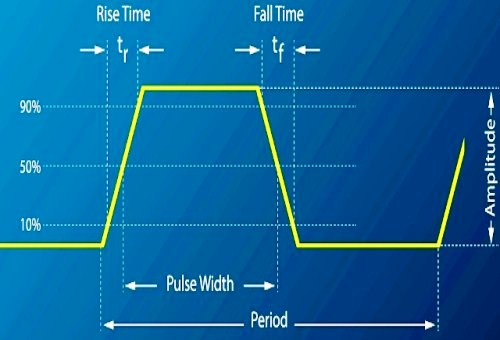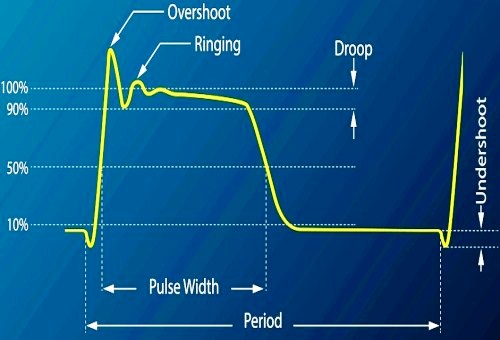
Modern automotive diagnostics is based on the principle that if you want the right answers, you have to ask the right questions, and looking at the above image, one could easily get the impression that the two mechanics are looking at a waveform or live data that does not quite make sense. If these mechanics are experienced they will no doubt figure it out, but how long it will take them to do so depends in large measure on the questions they ask, one of which in cases where an explanation of an issue is not obvious or immediately apparent, should always be “Why?” To illustrate the importance of asking “Why?” at the beginning of a diagnostic process, this article will explore the benefits of using appropriate questions (and the answers to them) to simplify diagnostic procedures, starting with this question-
Inexperienced mechanics should bear in mind that although exploring the “Why” of a customer concern such as a random misfire, odd vibration, or a sudden increase in fuel consumption is always important, asking why a vehicle is behaving in a certain way should not necessarily be the first question to ask. For instance, some symptoms may only appear under certain conditions, or the severity of a particular set of symptoms may increase, diminish, or disappear altogether depending on the vehicles’ speed, engine speed/load, operating conditions, and/or environmental factors such as extremes of temperature or humidity.
Other appropriate questions to ask include “When?”, and “How?” For instance, you might ask “When”, or under what conditions some or all symptoms manifest. Do all or some symptoms only appear at high road speeds, or only in wet weather, or only in hot, dry conditions, or only on uneven road surfaces, etc. The “How” aspect could explore how some or all symptoms affect drivability, fuel consumption, steering response, or vehicle stability, etc.
Note however that while the “When” and “How” of a customer concern can both play an important part in a diagnostic process, we should guard against putting the proverbial cart before horse, in the sense that “When” and “How” are the effects of “Why”, i.e., the effects of an issue always follow behind the cause(s) of the issue.
This writer can recount dozens of cases in which asking the right question at the right time produced a logical explanation of a customer’s concerns. However, the value of such tales is limited since it is highly unlikely that anyone reading this article will ever encounter the same problem on the same vehicle under the same conditions. So instead, let us use a hypothetical case that involves a random misfire on a V6 petrol engine that is fitted with variable valve timing. Note however that the oscilloscope trace below is a generic representation of an ideal waveform, and is therefore not representative of an actual ignition waveform. Nonetheless, let us see-

Let us assume that the above waveform is a known good example of an ignition coil trace on our hypothetical V6 engine; it is not, but let us assume that it is. In this example, the ignition event completed without any deviation(s) from the expected waveform, although (only) code P0300 – (Random Misfire Detected) had been stored during the previous drive cycle. Freeze frame data was inconclusive, since it showed that the misfire had occurred once with a throttle opening of 11% when the engine was cold, and several times on both cylinder banks at relatively low engines speeds, but during WOT conditions, and when the engine was hot.
Despite the fact that only P0300 is present, preliminary investigations were carried out with regard to fuel pressure, exhaust backpressure, all reference voltage circuits to eliminate MAP/MAF and other engine sensor issues as a possible cause, and the charging system to eliminate fluctuating system voltages as a possible cause of the random misfire. Moreover, all ignition coils were tested on a test bench, and all performed within acceptable limits in terms of ramp-up and discharge times. Finally, the misfire did not recur with the engine idling while the vehicle was stationary, nor did it recur when the engine speed changed rapidly while the vehicle was stationary.
At this juncture, the only logical question to ask is “Why?” Why does the misfire apparently occur only while the vehicle is in motion and why under wildly different operating conditions? The “When” and “How” aspects of this issue have both been answered, and in the absence of both active and/or pending valve timing codes (or any other codes except P0300), we have to conclude that the “Why” aspect of the issue involves an intermittent fault that can, and does occur under a variety of operating conditions. Thus, to answer the question, we have to-

Since all the usual suspects such as abnormal fuel pressure, the condition of the ignition coils, abnormal or fluctuating system voltages, fuel injector driver circuits, camshaft phasing and camshaft correlation with the crankshaft position etc, were interrogated and eliminated as likely causes of the random misfire, we have to obtain live data to better define the problem.
In this case, code P0300 was cleared, and the vehicle was driven with an oscilloscope connected. As expected, the misfire recurred twice under high engine loads; once with a throttle opening of 13% and a road speed of 23 km/h, and once under WOT conditions at a road speed of 49 km/h. In both cases, the ambient temperature was 29 degrees C, and the humidity was at a comfortable 32%, which means that the problem was not caused by extreme climatic or environmental conditions. In addition, according to the freeze frame data, the first instance of the fault occurred when the engine was cold, while the second instance occurred when the engine had been running at operating temperature for more than 30 minutes.
Thus, if we again assume (or imagine) that the oscilloscope trace above reflects the actual fault condition we can begin to make sense of the issue, since we now have a graphic representation of the symptoms in the oscilloscope trace.
For instance, if we take the plateau in the trace to represent a single ignition event, we will notice that the coil saturation current fluctuates, but why would it do that? We could of course connect the oscilloscope to each coil and repeat the drive cycle to see if we can replicate the trace for each coil, but we could also extract stored fault codes; if we do and code P0300 had returned, we will know that multiple cylinders are likely affected.
Assuming then that P0300 had indeed returned we have to ask why it had returned. We know now that the fault is intermittent, but since it is almost unheard of for multiple spark plugs to fail simultaneously, and that all the ignition coils are in good condition, why would the fault only appear under high engine loads? If the problem involved the crankshaft position sensor, would the random misfire not occur, well, in a random fashion, and not only under high engine load conditions, regardless of the engine temperature?
Well, it might, but to eliminate the possibility of the crankshaft position sensor being defective, we can replace the sensor with a known good sensor, but what if we did that and the fault persisted, as it well might? For one thing, a defective sensor would not affect only a few cylinders; if a crankshaft position sensor fails even sporadically, all the cylinders would be affected when the sensor failed for brief periods.
At this point, an inexperienced mechanic might be tempted to start throwing parts at the problem hoping that something will stick, but-
Instead of throwing parts at the problem, it is almost certain that an experienced technician would consider the nature of intermittent electrical issues, which by definition, very rarely follow a predictable or even a discernable pattern.
Knowing this, an experienced technician would not ask why the symptoms manifest in the way they do. Instead, an experienced technician would ask why the intermittent fault is present in the first place. For instance, is it because of a simple wiring issue such as a bad electrical connection, or is it because a part or component fails intermittently as the result of prolonged exposure to heat and/or excessive vibration, or the presence of moisture in a wiring harness or fuse box? Then again, could it perhaps be an abnormal electrical resistance or intermittent loss of ground or continuity in an associated circuit, or perhaps a software issue?
In a case like our hypothetical random misfire, an experienced technician would narrow down the possible causes of the issue by asking why each of the above possible causes would produce the observed symptoms. Typically, this process would follow this general pattern-
Question: If it is a software issue, why are there no communication codes present?
Answer: Since there are no communication codes present, it is unlikely to be a software or ECU issue.
Question: If there is water in a fuse box, why does the problem only occur under high engine loads, and why is only ignition circuits affected?
Answer: Water in a fuse box would not affect only ignition circuits; every circuit that comes into contact with water or excessive moisture will almost certainly be affected.
There are off course many other questions our hypothetical technician could ask, but the point is that asking “Why?” in an intelligent, focused, and calculated way produces useable answers- each of which will either eliminate a possible cause, or, point the questioner in a certain direction. Thus, the more times a technician asks “Why?”, the clearer it will become to him that one particular possible problem is more likely to be the root cause of the customer’s concern than any other possible cause. Thus, continuing to ask “Why?” has the effect of separating the least likely causes from the causes that are more likely to produce the observed symptoms, which can save many hours of diagnostic time.
In the case of our hypothetical random misfire on a hypothetical engine, our hypothetical technician will eventually arrive at the conclusion that the intermittent fault is caused by a bad connection somewhere in one or more ignition circuits, or by break in a wire somewhere in one or more ignition circuits, or by a brief, intermittent short circuit to ground somewhere in one or more ignition circuits.
All of the above would explain the fluctuating ignition coil saturation current, so from this point onwards, the diagnostic process becomes very easy. All our technician has to do now is to verify that the circuits between each ignition coil and the ECU, as well as between the ECU and the crankshaft position sensor are intact by performing appropriate resistance and continuity tests. If these circuits all check out, our technician will check all wiring between the crankshaft position sensor and the ECU, as well as all circuits between the camshaft position sensor(s) and the ECU.
In this case, our technician will almost certainly find either a break in a conductor inside a wire, or, more likely, a spot on a wire where the insulation had rubbed through against an engine component, causing an intermittent short circuit to ground. Both conditions would explain the fact that the random misfire only happens under high engine loads, which cause the engine to move more on its mountings than it would do under moderate to light engine loads.
Put in another way, this means that when the engine rotated counter to the direction of torque, the break in the conductor (that was likely not routed correctly) caused an intermittent loss of continuity, or, the rubbed-through spot on a wire caused an intermittent short circuit to ground.
In either case, the solution is simple; repair or replace wiring as required; making sure all wiring is routed correctly and secured properly to prevent placing undue strain on the repaired/replaced wiring.
NOTE: Inexperienced mechanics should take note that the phrase “repair or replace wiring as required”, is a gross oversimplification. Assuming that all implicated sensors are known to be good, a repair of this nature can involve replacing large sections of a wiring harness, or in some cases, the replacement of an entire engine harness. In both cases, and depending on the vehicle make and model, it may be necessary to integrate one or more control modules into the CAN or other type of serial communications system (FlexRay™ systems comes to mind), after the harness replacement.
While the example used in this article is a hypothetical case, it should suffice to illustrate the point that asking the right questions at the right time usually provides the right answer. However, knowing which questions to ask when requires a solid knowledge of both circuit topology, and the way different serial communication systems arrange and manage communications between sensors, microprocessors, and the onboard diagnostics system.
Much of this required knowledge can only be acquired by chasing down the root causes(s) of tricky electrical issues, but don’t let this deter you from tackling issues of this kind. You will soon discover that the more times you ask “Why?” the easier it becomes to differentiate between probable causes, possible causes, and the causes that are the most likely to produce the symptoms you observe.